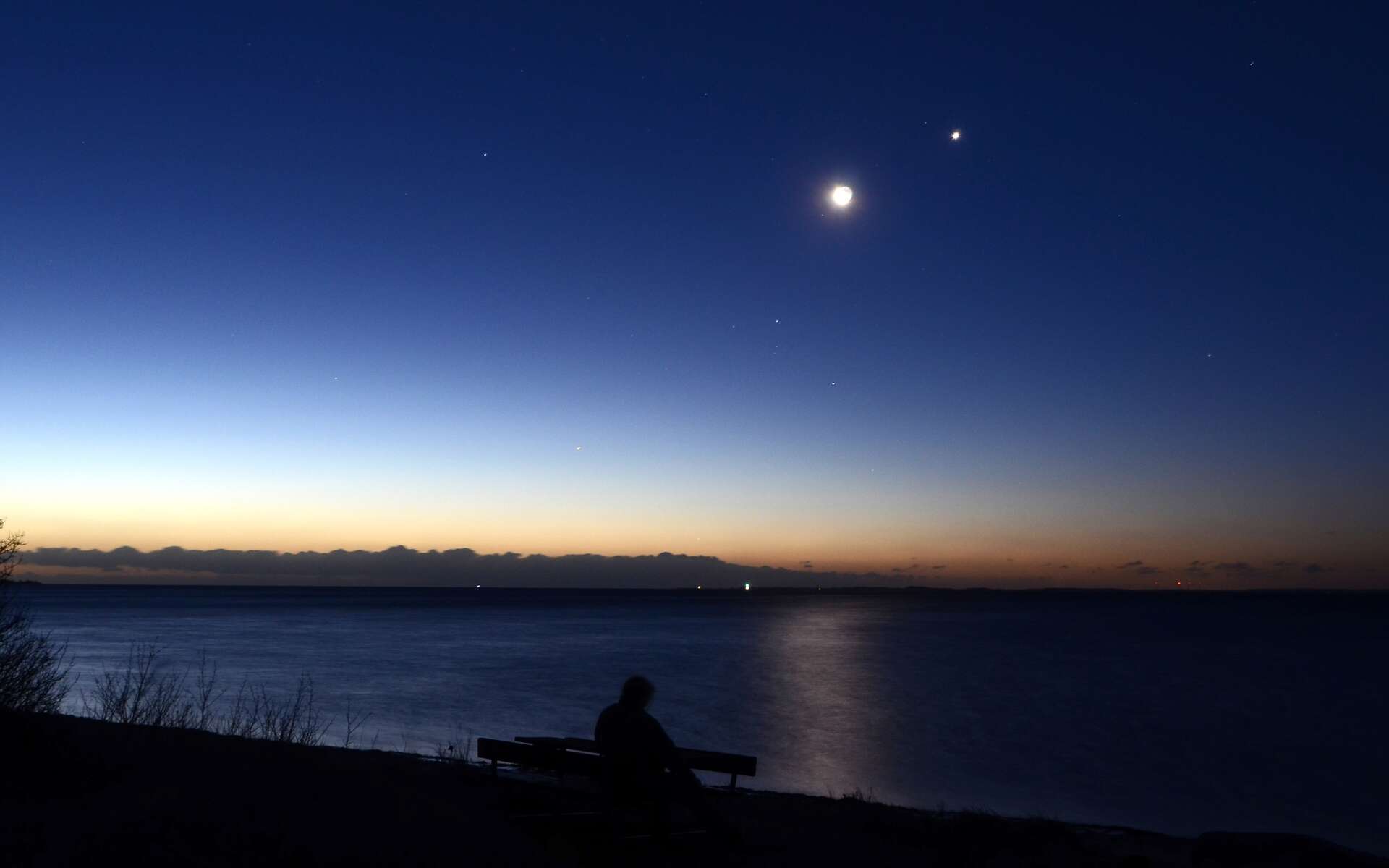
A few weeks after the beautiful twilight encounter of Venus and Jupiter, the two brightest planets in the sky are still there, but have again distanced themselves in a celestial scene that has evolved with the revolution of the Earth. For Jupiter, it is also becoming difficult to observe it, because it is low above the horizon and closer and closer to the Sun (seen from Earth). These are indeed the last days to see her before she takes some time off. Same difficulty to see Mercury, which Jupiter crosses at dusk on March 28. The largest planet in the Solar System facing the smallest, seen above from the west. For the latter, it will be better over the next few evenings, because it will take more height.
Higher and still unmistakable: Venus. Only the Moon shines brighter than her. Not far from the hottest planet is Uranus tonight. But I don’t expect to distinguish this small turquoise blue dot without a telescope. Neptune and it are the farthest from the Sun, and from us, and are the only ones that cannot be observed with the naked eye or with binoculars.
Finally, the Moon, in the first quarter, culminates tonight in Gemini with Mars at its side, at the feet of Castor. Two conjunctions tonight that are sure to pique your curiosity.




GIPHY App Key not set. Please check settings